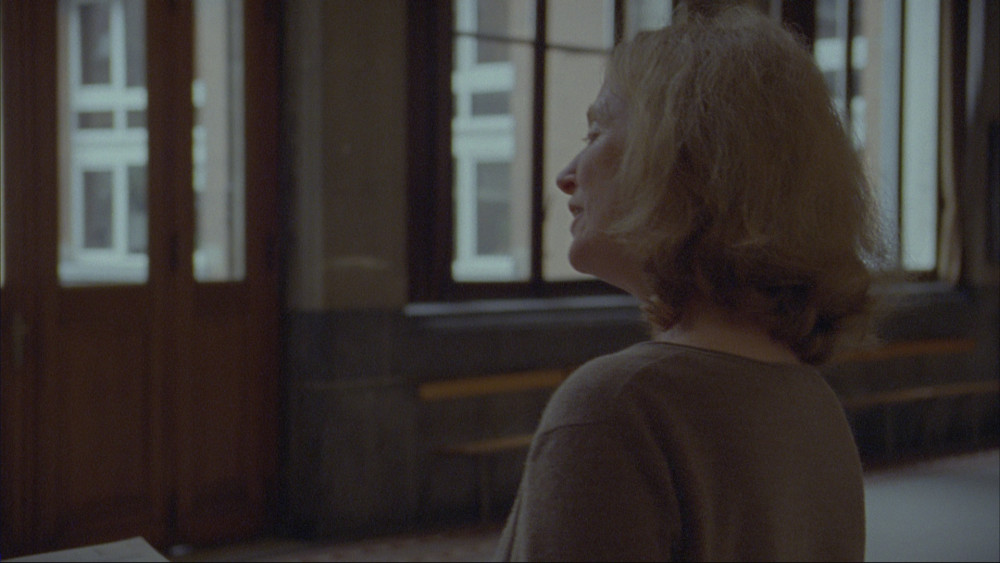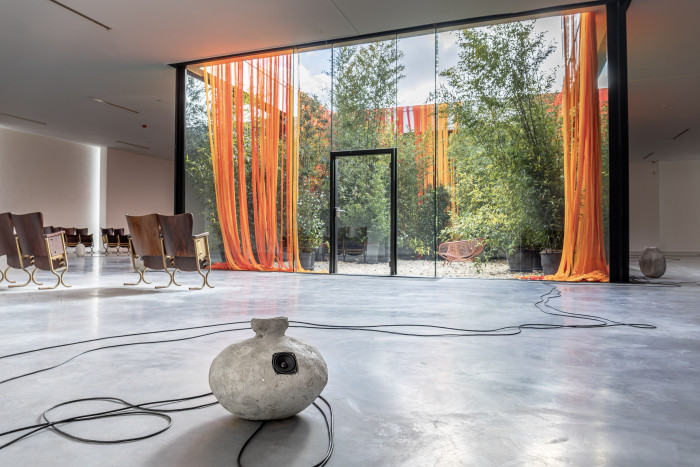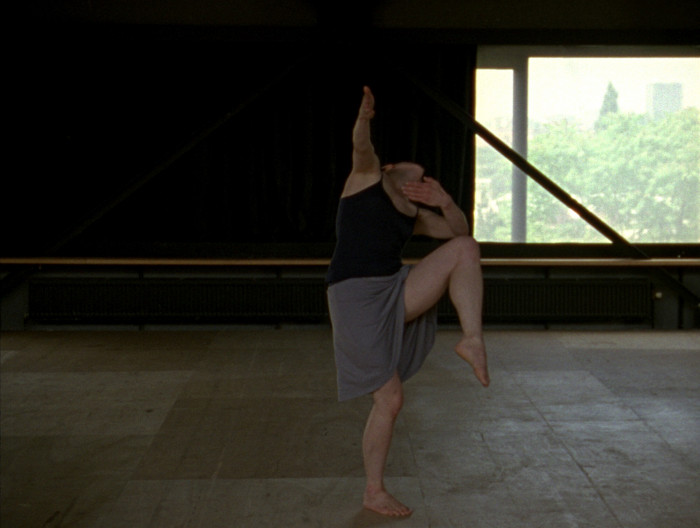one, two, many
Made for documenta (13) in 2012, the film one, two, many consists of three performances: a flute piece played with circular breathing, a spoken monologue, and a song sung by four vocalists in front of an audience. The three performances are linked by the central themes of body and listening. Each part deals with the existential dimension of the voice in its own way, a recurring theme in other works by the artist, notably Blindsight, which is also part of the KANAL collection.
The first part—One—focuses on the flautist Michael Schmid's strong breathing technique in a piece by Istvàn Matus, where breathing is transmuted into musical notes. The second part—Two—introduces the notion of plurality, suggested by the voice-over description of Roland Barthes' lecture entitled "How to Live Together". This description focuses in particular on the voice of the French philosopher. The last part—Many—features a group of people listening to the performance of Giacinto Scelsi's Tre canti popolari, a strident and onomatopoeic piece.
It was in this work that Manon de Boer first broached the notion of "idiorrythmy", which Roland Barthes described in "How to Live Together", his first lecture at the Collège de France, given from January to May 1977. Using this neologism, he referred to the fact that each individual in a community can live at his or her own pace. Thus, idiorrhythmy implies a tension between the individual and the community, between solitude and sociability. De Boer incorporates this idiosyncratic concept of time into other works while also questioning her own rhythm as an artist.


